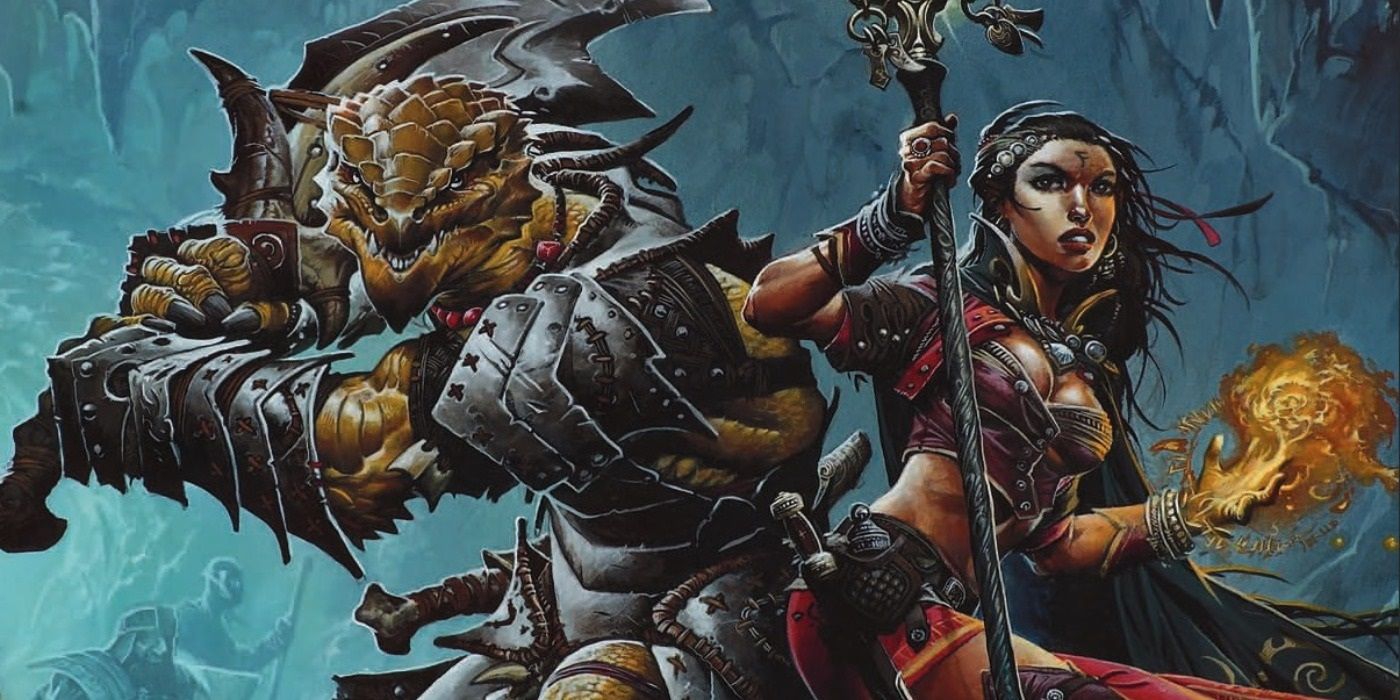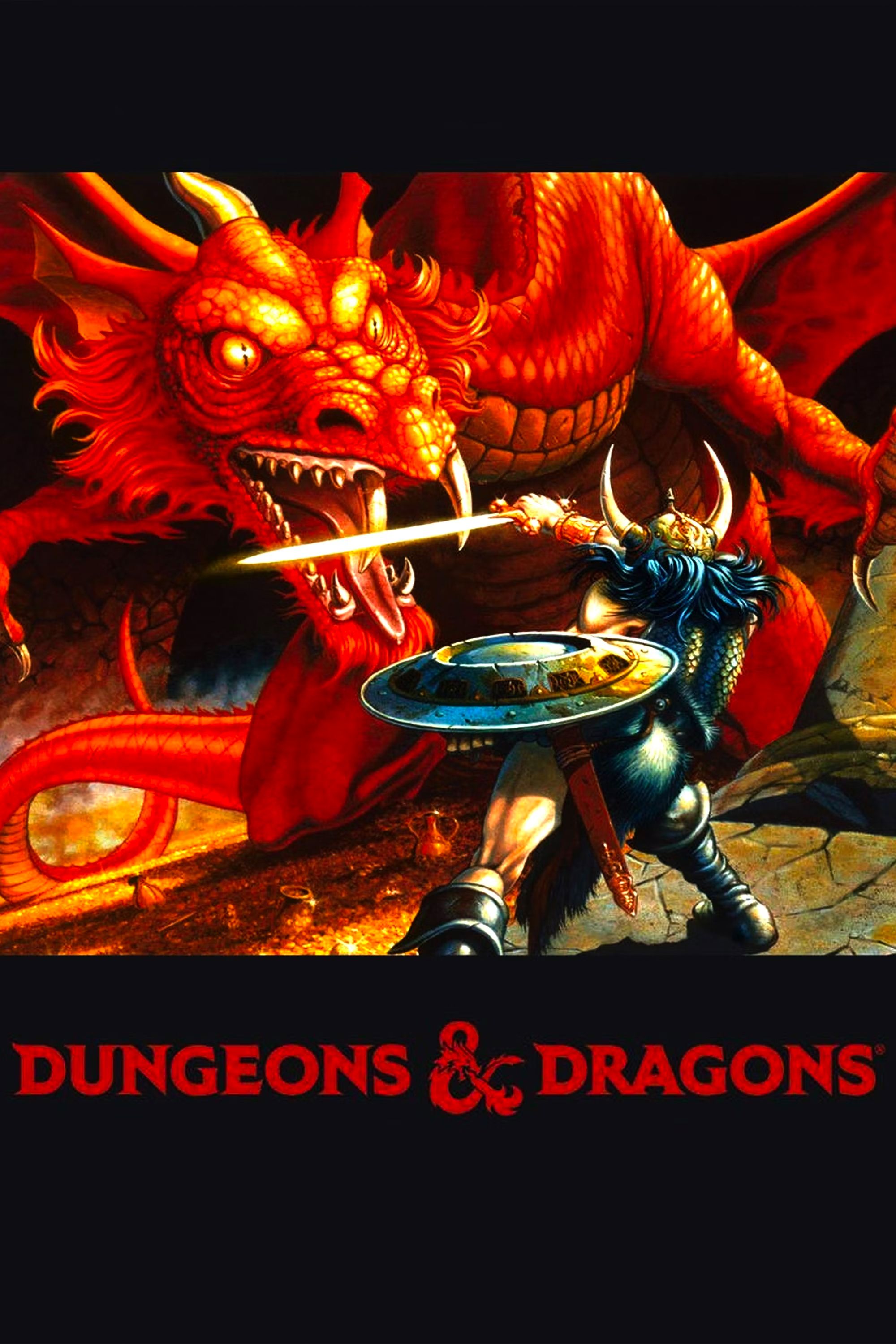Dungeons & Dragons is known for its many classes and spell casters. The warlock is unique in that its spell slots can regenerate with a short rest, but it comes with having far fewer spell slots compared to most other classes. All warlock spells are cast at their highest available spell slot as well, an additional difference to other classes, which plays on the idea of borrowed power via a pact.
Of course, there are shared spells in the list between warlocks and other spell casters. Thanks to being a charisma caster, a lot of these shared spells are with bards and sorcerers, while some are with wizards, thanks to that class’ extensive spell list. Despite sharing spells, it does not mean that they are equally viable for all classes, and some of the warlock’s unique spells make it one of the most fun and powerful classes around.

Related
Every D&D 5e Playable Race That’s Based On A Real Animal
D&D’s playable races take inspiration from many sources, including the natural world. Here’s every race that’s inspired by a real animal.
10
Mage Hand (Cantrip: Conjuration)
A Helping Hand Goes A Long Way
Mage hand benefits from being a Cantrip, thus meaning that a Warlock does not need to waste their valuable spell slots. It is an incredibly versatile spell that depends largely on a player’s creativity. Unlike in Baldur’s Gate 3, mage hand is constantly castable, lasting up to a minute at a time. It has to be moved with an action in combat and can move up to 30 feet from a player character. It can also be summoned up to 30 feet away.
Mage hand cannot perform an attack action, but that does not mean it cannot be used in combat. It is brilliant for those brave few who want to take stealth approaches to encounters, but it can also be used to drop objects from above, like bombs, since it floats and can get to places many player characters cannot. It can only carry up to 10 pounds in weight, and its overall use can sometimes depend on what a specific Dungeon Master will allow.
9
Minor Illusion (Cantrip: Illusion)
The Versatility Of Projections
Minor illusion is an incredibly useful Cantrip shared by many classes, adding utility to a warlock’s kit. Its description is quite lengthy, giving examples of its use, but realistically, it will depend on either the creativity of a player or what the Dungeon Master will allow. It can only make a sound or an image, not both, but two casters can work in tandem to sell an illusion, and it is very useful for those who want to make a rogue’s life easier by helping them sneak about amid distractions.
There are limits to the illusion, which is what makes it minor, meaning that it cannot be larger than a 5-foot cube. Practically, any illusion that fits in this space can be made, however, meaning that almost anything can be done with this spell. It can be used to pull pranks, distract guards, have a bit of role-play fun, or even frighten enemies away from an area with haunted noises. Of course, the illusion can always be discerned with an Intelligence Saving throw, but warlocks only need Charisma, so their Spell DC should be high.
8
Thunder Step (3rd Level: Conjuration)
Stepping Out With A Bang
Movement in D&D can be cruel at the best of times, especially for warlocks looking to get within melee range with their (relatively) smaller health pool. Thunder step provides warlocks with an easy escape route, teleporting up to 90 feet away. A warlock can even teleport a willing creature within 5 feet of them, meaning that another player in danger or an NPC that needs saving can be whisked away to the sound of booming thunder.
Unlike misty step, thunder step is loud, and is ill-advised for stealth, but it does damage and is more versatile. It does require an action, but it can be a lifesaver if used correctly. More importantly, it can be used to give chase should a cowardly enemy try to sneak their way out of an encounter. In most D&D maps, 90 feet is considered an impressive distance, especially because a player can still move after casting the spell.
7
Summon Fiend (6th Level: Conjuration)
Friendly Neighborhood Demon
Any kind of summoning spell in Dungeons and Dragons is useful because of Turn Economy. The more turns the players have over the DM, the easier an encounter tends to be, although that doesn’t take into consideration RNG and genuine bad luck. Summon fiend is warlock’s best option in this regard, and especially thematic if a player has chosen the Pact of the Fiend subclass (for self-explanatory reasons).
The summoned fiend can take several forms, and their power is dependent on the level of the spell. Higher spell slots allow the Fiend to attack more often and have more health and a higher DC. It also does not require an action to command, as it will heed whatever a player says. These commands can even be secret from the enemies and other players, should a warlock wish, given that these Fiends have access to telepathy.
6
True Polymorph (9th Level: Transmutation)
Time To Become A Dragon
True polymorph can be as devastating as it can be fun. Unfortunately, shape-changers are immune to any form of polymorph, but almost everything else is up for grabs. Creatures can become other creatures, objects can become creatures, and creatures can even become objects. The possibilities are almost endless, especially because it can make the powerful useless and the unsuspecting dangerous.
There are some limits to true polymorph (otherwise, it would truly break D&D). When changing a creature into another creature, it must have the same Challenge Rating or lower and retains its alignment and personality. With an object, the creature will have a CR cap of nine and must be no larger than the size of that object but will be friendly to the party. If the object or creature is polymorphed for longer than the spell’s duration, the transformation becomes permanent.

Related
Gary Gygax’s Comic Inspirations for D&D Explain the Franchise’s Dark Side
The legendary Appendix N explains the origins of Dungeons & Dragons, but Gary Gygax’s comic book influences also point to the franchise’s dark roots.
5
Power Word: Kill (9th Level: Enchantment)
Does What It Says On The Tin
Instant death is and will always be one of the most devastating mechanics in any game. Power word: kill is the closest thing D&D has to this, killing any creature with less than 100 HP. All it takes is a line of sight, being within 60 feet, and a single word. One would expect such devastating effects from a ninth-level spell, but if a creature has more than 100 HP, the spell will not take effect.
Power word: kill is perfect for assassinations since the word can be whispered, and death is quite instant. Despite most endgame monsters having more than 100 HP, it doesn’t mean that they will remain above that total for long. It can be used to get rid of a wounded enemy who is on the verge of ending the exhausted party or simply to remove a monster from play who is attempting to run but has too many hit points to be killed by normal means quickly.
4
Mirror Image (2nd Level: Illusion)
Seeing Double
Mirror image is one of those spells that scales well no matter the level. It is an amazing defensive option, given that it can essentially negate damage, and is especially useful for Hexblade warlocks who need to get into melee range. It does not work for an enemy who can’t see, such as some foes with Blindsight. Those with Truesight can also see through the illusionary copies without worry, but both of these are usually rare.
Three copies are summoned, and the spell lasts as long as it takes for all three copies to be destroyed (they instantly vanish when taking damage). In theory, a warlock could go three attacks without taking any damage, and that’s assuming the copies get hit since they have a DC of their own. Their DC is 10 plus the warlock’s Dexterity Modifier, and the spell does not require concentration, meaning that getting hit won’t affect it.
3
Counterspell (3rd Level: Abjuration)
The Spell That Never Gets Old
Counterspell, by its nature, is situational, but when it works, it is one of the most satisfying spells in D&D. It has the potential to cancel out any spell, and because of how a warlock’s spell slots work, it will usually cancel out any spell that the party will face at the time. Any spell cast below counterspell‘s level is instantly canceled. Any spell cast above it requires a roll from the user of counterspell, which must pass a DC of 10 plus the spell’s level.
Counterspell‘s use will depend on the campaign since it has little use against trolls, giants, and other monsters unable to cast spells. If a party finds itself finding spell casters, then counterspell is a must. At least one person in the party is advised to have this spell, thanks to how useful it can be, and with a range of 60 feet, a warlock in the heart of the action can find themselves acting as the savior of their party with a handful of counterspell casts.
2
Hex (1st Level: Enchantment)
A Dose Of Classic Witchcraft
Hex is just good, plain and simple. It increases the damage of every attack done by the warlock by 1d6 against a single foe and because there is no save involved, there is no way to negate this damage outside of casting counterspell or remove curse. Once a foe is slain, hex can moved to another foe for more damage, and at higher levels the spell can last an entire day, provided that concentration isn’t dropped.
Although the damage of the spell doesn’t increase, the attack frequency of the warlock can. For instance, if a hexed target is struck by many scorching rays or multiple eldritch blasts, it will do an extra d6 for every single attack. If this is done to a boss over and over, it adds up quickly, and the fact that it scales well does not change how devastating it is at early levels. Just 1d6 in damage early on can be the difference in an encounter.
1
Eldritch Blast (Cantrip: Evocation)
Realistically, All A Warlock Needs
A warlock could choose to use no other spells outside eldritch blast, and they would still be considered powerful. On its own, eldritch blast is essentially a better firebolt, dealing 1d10 force damage, but at higher levels more blasts can be fired. This alone would make it one of the best damaging Cantrips in the game, but invocations to buff it make it as important to most warlocks as melee weapons are to most fighters.
This Cantrip has long been considered a warlock’s bread and butter for good reason. It can deal more damage based on a warlock’s charisma, repel foes, and has more range and fire at the rate. When paired with hex, the damage will make most wizards wonder why they bothered spending years learning magic from books when they could have just signed a contract with a devil to be the party’s heavy hitter.

Dungeons and Dragons
- Franchise
-
Dungeons & Dragons
- Original Release Date
-
1974-00-00
- Publisher
-
TSR Inc.
, Wizards of the Coast - Designer
-
E. Gary Gygax
, Dave Arneson - Player Count
-
2-7 Players





